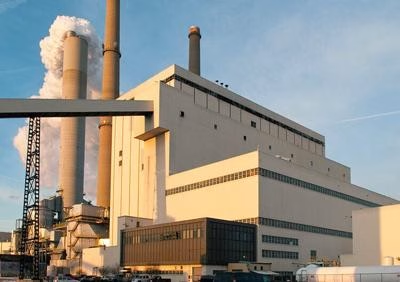Duke Energy Indiana is pushing forward a major transformation at its Cayuga Generating Station in Vermillion County, Indiana. The utility plans to replace two aging coal-fired units with a pair of advanced combined-cycle natural gas units. The proposed investment is approximately US $3.3 billion, plus financing and contingency costs. Construction is slated for completion of the first gas unit by 2029 and the second by 2030, enabling retirement of the coal units thereafter. The move addresses growing electricity demand in the region and aligns with regulatory filings citing generation shortfall risks.
Project Factsheet
Utility: Duke Energy Indiana
Location: Cayuga Generating Station, Vermillion County, Indiana
Investment: $3.3 billion (plus financing costs)
New capacity: Adds ~470 MW to existing ~1,005 MW at the facility
Future of coal units: Study on third-party operation; retirement scheduled 2029–2030
Ratepayer impact: First tracker adds ~$1.87/month; watchdog predicts up to ~$19.37 /month

Significance of the Project
From a construction-industry perspective, this conversion offers a vast and complex project pipeline: demolition of coal-steam infrastructure, heavy civil works for new foundations, erection of combustion turbines, installation of heat-recovery steam generators, and integration of modern utility systems. Similarly, the Samsung Engineering America low-carbon ammonia plant in Indiana, reflects growing investment in clean-energy and decarbonization projects that demand advanced engineering and construction expertise. According to project documents, the capacity increase is about 471 MW over the retiring units, meaning large structural, mechanical and electrical scopes. Moreover, the project’s regulatory context introduces cost-recovery mechanisms such as construction-work-in-progress ratemaking, which has implications for contractor project-phasing and financing.
The settlement with coal-industry stakeholders has also required a feasibility study for third-party operation of existing coal units, a novel approach that underscores the layered planning and stakeholder-management complexity. Finally, the heavy-industry nature of the work (power-plant scale) elevates opportunities for mechanical contractors, heavy-lift logistics firms, structural steel fabricators and specialist trade subcontractors, particularly those capable of working in large-site, high-specification energy-transition projects.
A Megaload Test Case
The agreement between NIPSCO (Northern Indiana Public Service Company) and Amazon is a landmark event that has shaken up Indiana’s energy regulatory landscape. Amazon committed to investing billions into building massive AI data center campuses in Northern Indiana, requiring an unprecedented amount of power—up to 2.4 Gigawatts (GW) of capacity.
Similarly, Duke Energy’s $3.3 billion Cayuga Station modernization is a direct response to this same statewide energy crisis, replacing old coal with a large, highly efficient natural gas plant to dramatically increase firm, dispatchable capacity and secure grid stability for a growing economy in Central Indiana. Therefore, both projects, though involving different utilities, are the state’s main examples of rapidly adding new, reliable gas generation to support an industrial demand boom that conventional resources can no longer handle.

